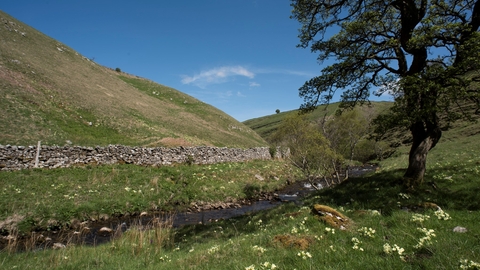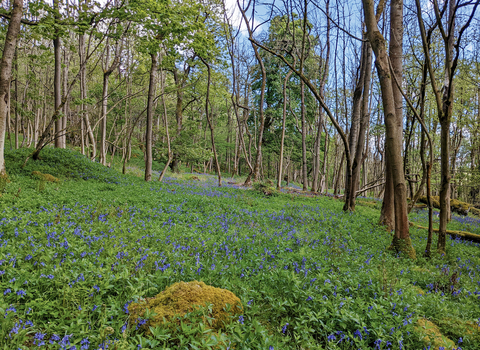
Park Gill nature reserve
Location
Know before you go
Dogs
Presence of livestock and ground-nesting/dwelling birds means it is essential to keep dogs on public footpath and under control.
When to visit
Opening times
All day.Best time to visit
Spring and summer for wild flowers and butterflies. All year for birds.About the reserve
Part of the former Scale Park hunting estate, Park Gill is a beautiful Y-shaped limestone valley, bisected by Park Gill and Caseker Gill, which twist south to Kettlewell to feed the River Wharfe.
Along these twisting streams, look out for dippers bobbing on the rocks; they are joined by migratory common sandpipers from April. Early purple orchids line the banks of Park Gill, whilst drifts of yellow primroses brighten the hillsides in spring. Overhead, ravens announce their passing with a loud kronk, particularly if they spy a hen harrier or short-eared owl quartering the grasslands. In areas of poorer grassland, we are re-establishing Gill Side Wood which would have covered much of the reserve until the last century. Many trees will be planted to enhance the mosaic of habitats and to provide a home for species that would have lived here in the past.
In the deep, cool Caseker Gill, we hope that woodland showing characters of temperate rainforest will develop over time, as the moist, sheltered conditions support rare species of fern, lichen and moss. Iconic black grouse are in the local area and they are one species that will benefit from more berry-bearing bushes and trees in the future.
We hope to introduce extensive grazing too, to help look after the species-rich limestone grasslands, ensuring plants such as mountain everlasting, rock-rose and carline thistle flourish, in turn providing habitat for the tiny northern brown argus butterfly. Look closely at the calcareous flushes along the path – you can find carnivorous common butterwort growing alongside carnation and long-stalked yellow sedge.


